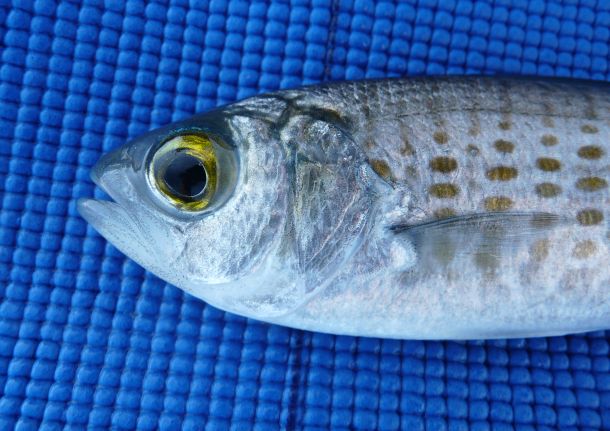THE Australian herring or tommy ruff (Arripis georgianus) is a species unique to this country. The herring is an important “bread and butter” species that is commonly encountered by anglers fishing in estuaries and inshore waters of southern Australia from Shark Bay in WA south throughout South Australia to as far east as Port Phillip Bay in Victoria.
The Australian herring is one of four members of the Family Arripidae, a group of fishes that occur only in Australian and New Zealand waters. The other three species within the group are classified within the same genus (Arripis), but grow to much larger sizes (up to 10 kg) and are known as Australian salmon (or kahwhai in New Zealand). In contrast, Australian herring grow only to around 40cm long. Upon closer examination, it’s easy to see why tommies are closely related to Australian salmon. They are superficially similar in appearance to juvenile Australian salmon, but are easily distinguished by their much larger eye, their rough scales, the distinctive black tips on their tail and their grey coloured pectoral fins. Small Australian salmon, on the other hand, have smooth scales and bright yellow pectoral fins.
Australian herring reach sexual maturity in their second year of life at about 18cm for males and 20cm for females. Sexes remain separate throughout their lives, and spawning occurs in coastal areas off the south west and southern WA coastine during the early winter months (May-June). Many of the resultant larvae and juveniles that are produced at this time are transported eastwards to nursery areas in the Great Australian Bight by the flow of the Leeuwin Current and wind-driven easterly movements of coastal waters. Indeed, the strength of year classes of Australian herring in South Australian waters have been found to be directly related to the strength of the Leeuwin Current.
Growth is rapid and it appears that under ideal conditions Australian herring can grow to around 10cm long within six months and 14cm in their first year. After around two years, adult fish undertake the long pre-spawning migration back to the western south coast and lower west coast of Western Australia where they spawn. After maturity, growth slows markedly and it takes around five years for Australian herring to grow to 30cm long, with fish attaining the upper limits of growth (c. 40cm) at a maximum of around 10-12 years old. Because of the large scale of the spawning migration, its not surprising that there appears to be only one genetic stock of Australian herring throughout their distribution.
Australian herring are aggressive and highly visual feeders, that respond well to berley. Juveniles eat a wide variety of zooplankton while adults can be captured on a variety of baits such as fish, shellfish, worms, maggots, as well as small lures and flies. In turn, they are an important feed source for larger predators including Australian salmon, kingfish, mulloway, southern bluefin tuna and sharks.

















